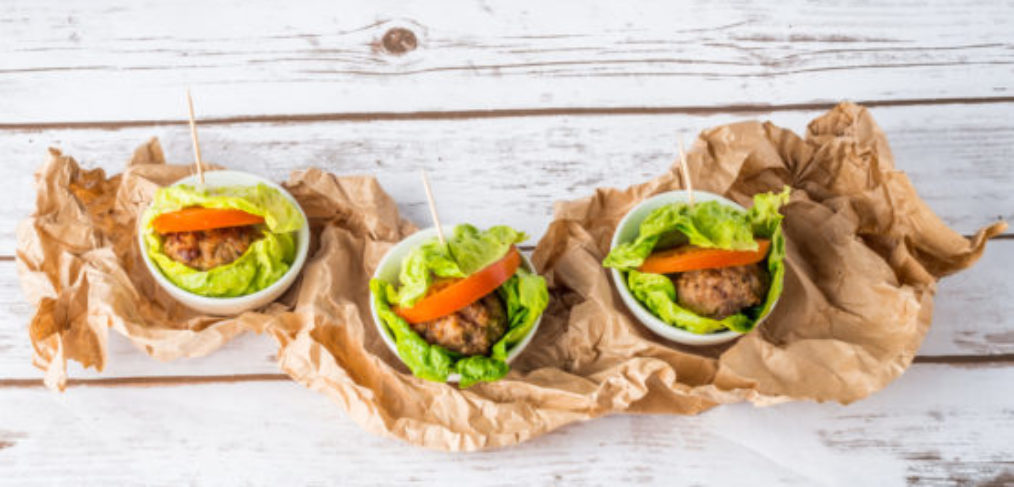Moving Toward Plant-Based with Authenticity and without Fake Food

I am plant-based. I’ve always been. And I eat meat. In small portions and only from proper sources that are 100% organic, grass fed and finished.
Who ever said plant based must mean vegan?
Just two weeks after an article was published in the New York Times stating that new research says, “you can’t prove red meat is truly bad for you” (1), we learn that there’s a new group of companies that have begun making meatless meat anyway: the same food conglomerates and meat producers that Beyond Meat and Impossible Foods originally set out to disrupt (2).
While it would certainly take more than a single study to overhaul the current thinking that includes such directives as not to eat read meat more than x times per month or that one with a family history of high cholesterol should do so even more infrequently, the general misconception that meat is bad for the planet, unhealthy for us humans to consume and that somehow the vegan label automatically makes the item inside the package an overall superior choice is what is screaming to be addressed.
Let’s set the record straight.
Below are a series of factors we might consider when deciding between an Impossible Burger, or Beyond Meat (Plant Based Ground Beef), Vegan, No Soy, No Gluten Burger and a 100% organic, grass fed and finished burger.
The reality is that virtually all the meat, eggs, and dairy products that we find in the supermarket come from animals raised in confinement in large facilities called CAFOs or “Confined Animal Feeding Operations.” These highly mechanized operations provide a year-round supply of food at a reasonable price. Although the food is cheap and convenient, there is growing recognition that factory farming creates a host of problems, including:
• Animal stress and abuse
• Air, land, and water pollution
• The unnecessary use of hormones, antibiotics, and other drugs
• Low-paid, stressful farm work
• The loss of small family farms
- Food with less nutritional value (3)
Accordingly, if we compare a burger made from this type of meat, it’s understandable to deduce that a vegan substitute might make sense.
But that fact alone isn’t reason enough to shift to a vegan version of a plant based diet.
First and foremost, who ever said that plant based must be vegan? I consider myself plant based even though I do eat small portions of wild fish, grass fed and finished beef, game meat and pasture raised pork.
If upwards of 80% of one’s diet is made of organic, in-season, locally sourced plants, mostly vegetables, a small amount of fruit and over half the fat sources I rely upon for my daily fats (olive oil, avocado and coconut oil), isn’t that percentage enough for a “base” of plants?
Next, let’s talk about portions.
If we continue with the example of the diet above, assuming that small percentage of calories coming from meat are not only coming from properly sourced, local animals, but eaten in small, human-sized portions, we dramatically reduce the amount of cattle needed to feed red meat to any given local community.
Unfortunately, we have a portion control issue in the US; not only with regard to what we’re eating, but what we’re served.
Considering the fact that approximately 85% of the food that isn’t used or eaten in a typical American restaurant is thrown out (4), not only are we presented with servings reflective of our “eyes bigger than our stomachs” (does one human really need a 16 oz rib eye?), we’re not consciously thinking about what’s happening to that food we never finish.
But is the answer to completely eschew meat?
I don’t believe so.
While the two start-ups Beyond Meat and Impossible Foods may be non GMO and organic, there are far two many other brands who may simply just promote the fact that they don’t contain animal products, so are therefore vegan and without directly stating as much, presented as being a healthy choice.
We cannot allow ourselves to get too wrapped up in the way in which a food is labeled; one might even go so far as to argue if it is in a package with a label, that in and of itself might be reason enough to question its nutrient density.
This isn’t specific to a vegan label; we’ve seen it for years with a gluten-free label, then paleo and now with keto.
One can fill their entire cart at Whole Foods with any or all of the above marked items and still walk home with no actual food. Nothing fresh or with any nutrient density… perhaps even more of an example of a ‘dead food’ than eating meat.
How does one measure the impact on the planet of a package of tofu in a plastic container made of GMO soybeans grown in the Amazon where a rainforest used to exist (5)?
And the impact in terms of inflammation on the person who eats the tofu because his doctor advised him to cut out red meat when his total cholesterol numbers were unfavorable?
As a recovered vegan myself, someone who adamantly avoided all animal products for a solid two years, I can say from a personal standpoint that my approach was ill informed.
I was not separating the different meats from different sources and in retrospect I can now see that my actions did nothing to help support animal welfare.
Without realizing it, I was not only boycotting the Monsantos, I was boycotting the local, human, ethically minded farmers who were trying to do things the right way to support animal welfare, the very reason I was vegan in the first place!
Benefits of choosing to eat small portions of meat from grass fed animals include (6):
- Meat from grass-fed animals has two to four times more omega-3 fatty acids than meat from grain- fed animals
- Ruminants raised on fresh pasture alone render products that contain from three to five times more CLA than products from animals fed conventional diets
- Lower in total fat
- Higher in beta-carotene
- Higher in vitamin E (alpha-tocopherol)
- Higher in the B-vitamins thiamin and riboflavin
- Higher in the minerals calcium, magnesium, and potassium
- Higher in total omega-3s
- A healthier ratio of omega-6 to omega-3 fatty acids (1.65 vs 4.84)
- Higher in CLA (cis-9 trans-11), a potential cancer fighter
- Higher in vaccenic acid (which can be transformed into CLA)
- Lower in the saturated fats linked with heart disease
And how about Mother Earth?
Raising animals on pasture instead of factory farms is a net benefit to the environment.
- A diet of grazed grass requires much less fossil fuel than a feedlot diet of dried corn and soy.
- On pasture, grazing animals do their own fertilizing and harvesting. The ground is covered with greens all year round, so it does an excellent job of harvesting solar energy and holding on to top soil and moisture.
- Grazed pasture removes carbon dioxide from the atmosphere more effectively than any land use, including forestland and ungrazed prairie, helping to slow global warming.
When we choose to eat meat and eggs from animals raised on pasture, we are improving the welfare of the animals, helping to put an end to environmental degradation, helping small-scale ranchers and farmers make a living from the land, helping to sustain rural communities, and giving your family the healthiest possible food. It’s a win-win-win-win situation.
When we do so in small portions and obtain the bulk of our calories from produce vendors at our local farmer’s markets or CSA (or grocers, if we are committed to reading the fine print in terms of where that lettuce grew and how long ago it was harvested), we are best able to support the health of our planet and the health of our bodies in one fell swoop.
So where does that leave the meatless burgers?
For me, it leaves them on the shelves.
For others, it may be a balance of doing your own due diligence to see if these type of products can play a role in your overall nutrition regime.
How are you doing in terms of inflammation? If you’re in the US, you’re 80% or more likely to have some degree of inflammation or gut dysfunction.
You can start with a self test by cleaning up your diet, removing the potentially inflammatory foods for a period of time and then properly testing suspected (and possibly surprising) culprits, you can then see how your body reacts to soy Protein Concentrate, Coconut Oil, Sunflower Oil, Natural Flavors, 2% or less of: Potato Protein, Methylcellulose, Yeast Extract, Cultured Dextrose, Food Starch Modified, Soy Leghemoglobin, Salt, Soy Protein Isolate, Mixed Tocopherols (Vitamin E), Zinc Gluconate, Thiamine Hydrochloride (Vitamin B1), Sodium Ascorbate (Vitamin C), Niacin, Pyridoxine Hydrochloride (Vitamin B6), Riboflavin (Vitamin B2), Vitamin B12, the ingredients of an impossible burger.
Compare that to a real, whole, unadulterated meal made of actual food that you can identify… food that doesn’t have a table in the first place.
For me, there’s just no replacing a raw kale salad with tons of olive oil, avocado, lemon, Himalayan salt and a piece of a nice, juicy grass-fed and finished rib eye (half for now and the rest for tomorrow.)
Net alkaline, nutrient dense and nourishing.
That is food.
- https://www.nytimes.com/2019/09/30/health/red-meat-heart-cancer.html
- https://www.nytimes.com/2019/10/14/business/the-new-makers-of-plant-based-meat-big-meat-companies.html
- http://www.eatwild.com/basics.html
- https://www.moveforhunger.org/startling-reality-food-waste-restaurants/
- https://kids.mongabay.com/elementary/soy.html
- http://www.journalofanimalscience.org/content/87/9/2961.long





